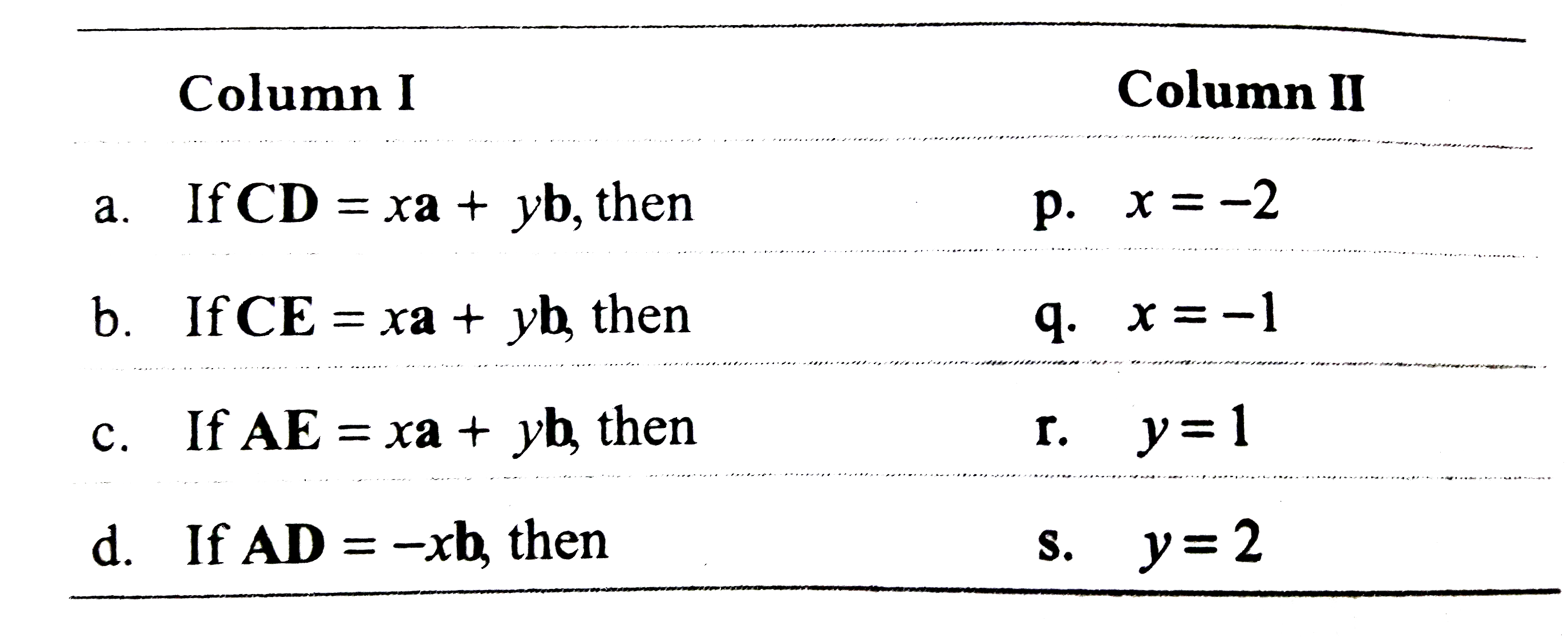a and b form the consecutive sides of a regular hexagon ABCDEF.

The correct Answer is:

ltvrgt (i)
(ii)
(because AD is parallel to BC and twice its length).
(iii)
(iv)
(v)
(vi)
(vii)
Topper's Solved these Questions
- INTRODUCTION TO VECTORS BOOK - CENGAGE PUBLICATIONCHAPTER - INTRODUCTION TO VECTORS EXERCISE - INTEGER TYPE
8 Videos
- INTRODUCTION TO VECTORS BOOK - CENGAGE PUBLICATIONCHAPTER - INTRODUCTION TO VECTORS EXERCISE - ARCHIVES SUBJECTIVE TYPE
9 Videos
- INTRODUCTION TO VECTORS BOOK - CENGAGE PUBLICATIONCHAPTER - INTRODUCTION TO VECTORS EXERCISE - LINKED COMPREHENSION TYPE
11 Videos
- INTEGRALSBOOK - CENGAGE PUBLICATIONCHAPTER - INTEGRALSEXERCISE - All Questions
762 Videos
- INVERSE TRIGONOMETRIC FUNCTIONSBOOK - CENGAGE PUBLICATIONCHAPTER - INVERSE TRIGONOMETRIC FUNCTIONSEXERCISE - All Questions
541 Videos
Similar Questions
Knowledge Check
Consider the following
If →aand→b are the vectors forming consecutive sides of a regular hexagon ABCDEF, then
1. −−→CE=→b−2→a 2.−−→AE=2→b−→a
3. −−→FA=→a−→b
Which of the above are correct?A1 and 2 onlyB2 and 3 onlyC1 and 3 onlyD1, 2, and 3¯a,¯b are vectors, ¯¯¯¯¯¯AB,¯¯¯¯¯¯BC determined by two adjacent sides of a regular hexagon ABCDEF.The vector represented by ¯¯¯¯¯¯EF is
A¯a−¯bB¯a+¯bC2¯aD−¯bIf ¯aand¯b represent the sides ¯¯¯¯¯¯ABand¯¯¯¯¯¯BC of a regular hexagon ABCDEF, then ¯¯¯¯¯¯FA=
Ab−aBa−bCa+bDnone of these
The coordinates of two consecutive vertices A and B of a regular hexagon ABCDEF are (1,0) and (2,0) respectively. The equation of the diagonal CE is:
View SolutionThe coordinates of two consecutive vertices A and B of a regular hexagon ABCDEF are (1,0) and (2,0) respectively. The equation of the diagonal CE is:
View SolutionIf →a, →b are the vectors forming consecutive sides of a regular of a regular hexagon ABCDEF, then the vector representing side CD is
View SolutionIf →a, →b are the vectors forming consecutive sides of a regular of a regular hexagon ABCDEF, then the vecrtor representing side CD is
a.→a+→b b. →a−→b c. →b−→a d. −(→a+→b)
View SolutionIf ¯a=¯¯¯ABand¯c=¯¯¯BC are two adjacent sides of a regular hexagon ABCDEF, Find the other sides in vector form.
View Solution
